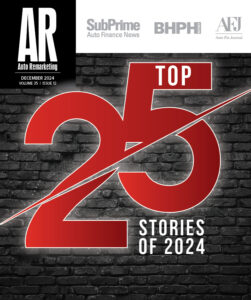How Industry Can Keep Residuals Near 50%

To help explain how residual values are behaving, Manheim Consulting regularly shares a graph showcasing the Manheim Used Vehicle Value Index versus mix and quality adjusted New Vehicle Price Index computed by the U.S. Bureau of Labor Statistics (BLS).
Manheim chief economist Tom Webb said that the visual aid should show a general upward drift for residual values because, “If you assume that we don’t go back to some of those bad practices of the past, then I think the percentage level of around 47 percent is not unusual.”
The two specific bad practices Webb mentioned during his quarterly conference call earlier this week included automakers pushing thousands of new vehicles into rental fleets only to have them show up in the auction lanes less than six months later. He also touched on OEMs slapping thousands of incentives dollar on the hood in order for franchised dealers to turn that new metal.
Webb was then asked how the industry can keep residual values on that upward drift even while wholesale prices are softening at least moderately from some of the peaks seen about two years ago along with new-vehicle leasing penetration staying near 30 percent currently and for the foreseeable future.
“I’m hopeful (new-vehicle leasing) continues to go up just because it’s a better practice for the industry. I think it’s better for the customer in many instances as opposed to being in those long-term loans, which I do think have the potential for causing some customer dissatisfaction at some point,” Webb said.
Webb then pointed out that a higher lease penetration rate should not “in and of itself” impact residual values.
“As a matter of fact, if leasing is done right, it should protect residual values. It should not reduce it,” he said. “The problem is, as you well know, because there are economic cycles your peak originations are going to occur at the top of the economic cycle and your peak off-lease volumes may very well occur at the trough. That’s the risk that you take as a lessor.
“But to the extent that we have more stable new-vehicle sales cycles, they’re mitigating some of that risk also,” Webb went on to say.
Diversity in the Rental Lanes
In another part of his quarterly presentation, Webb offered a breakdown of how rich the vehicle diversity is becoming in the rental-risk unit channel.
In the first quarter of 2013, Manheim determined there were 2,598 unique year, make, model, body configurations remarketed by the wholesale industry. This past quarter, the figure jumped to 3,623.
Furthermore, Webb mentioned the number of unique year, make, model, body configurations it took to reach 50 percent share of the rental-risk volume rose from 57 in Q1 of 2013 to 88 in Q1 of this year.
“It’s a good opportunity for dealers to acquire nice inventory,” Webb said of used-car managers hunting the off-rental lanes. “The shift away from having the rental fleets composed of vehicles that were stripped down in terms of options is something that really ended a long time ago.
“What that particular chart shows is more the diversity of the mix in terms of makes and models out there as opposed to being concentrated in what you might term, ‘the rental vehicle’ that we had in the past,” he continued. “There are a lot of different makes and models.”
To illustrate his point further, Webb touched on three specific vehicle categories dealers can find in off-rental lanes that might not have been so prominent in the past.
“Certainly in recent years, the rental car companies have done quite well with some of the smaller crossovers in their rental fleets because customers like them to rent and they also had good residuals when they came back,” Webb said. “Right now, some of the luxury high-end SUVs coming out of the rental fleets are also commanding good prices as are minivans.
“Of course, you have your bread and butter midsize cars, which are still the bulk of the rental fleet. But you still have a lot of different makes models and styles,” he added.
Another Thought on Dealer Profits
An earlier report from Auto Remarketing detailed why Webb contends retail demand is the primary driver as to why wholesale prices haven’t soften more. Webb further quantified his assessment by sharing a figure — 99.9 percent — especially if used-car managers are still frustrated by what they’re paying on the block to fill inventory.
“I would say that with 99.9 percent of these purchases (dealers) end up making a profit on the subsequent retail sale so they can continue to bid up,” Webb said.
“I would also think — but it might be harder to quantify — to the extent that dealers have increased their efficiencies and turn rates and they still have great F&I opportunities, that allows them to bid because to a certain extent there’s less of a risk premium in terms of what the pricing is. Certainly if they’re turning the unit quickly, they’re confident of that gross they’re going to achieve,” he went on to say.

 View The Latest Edition
View The Latest Edition

